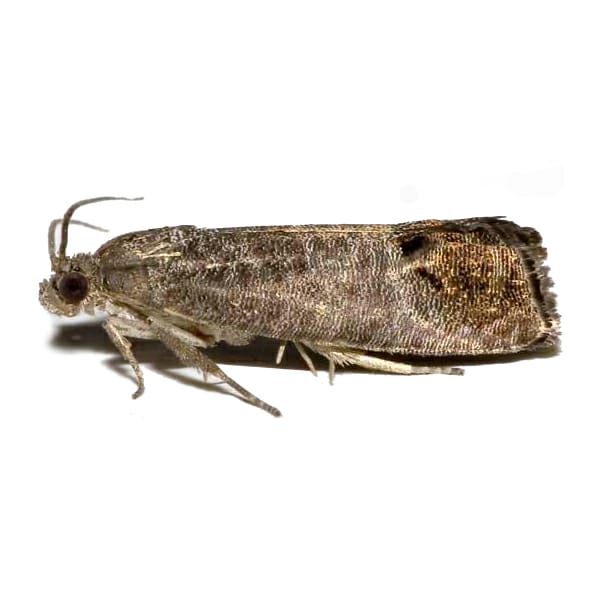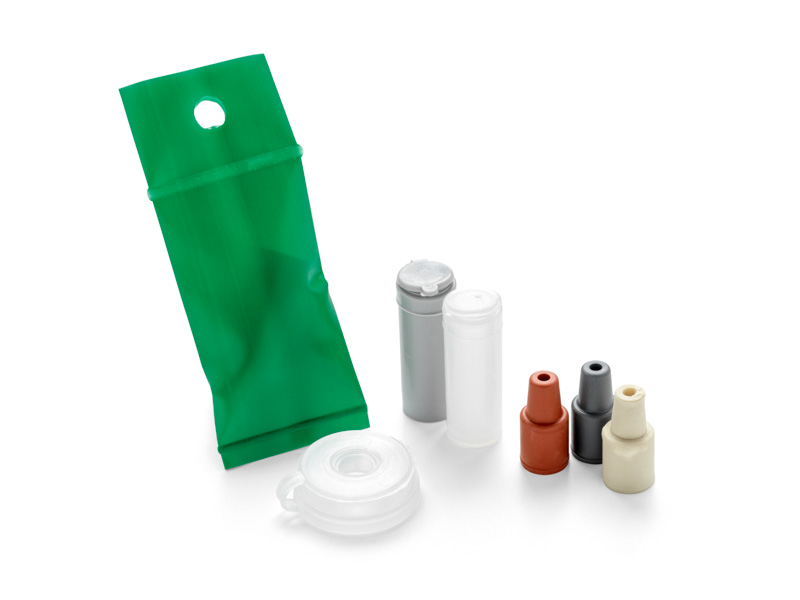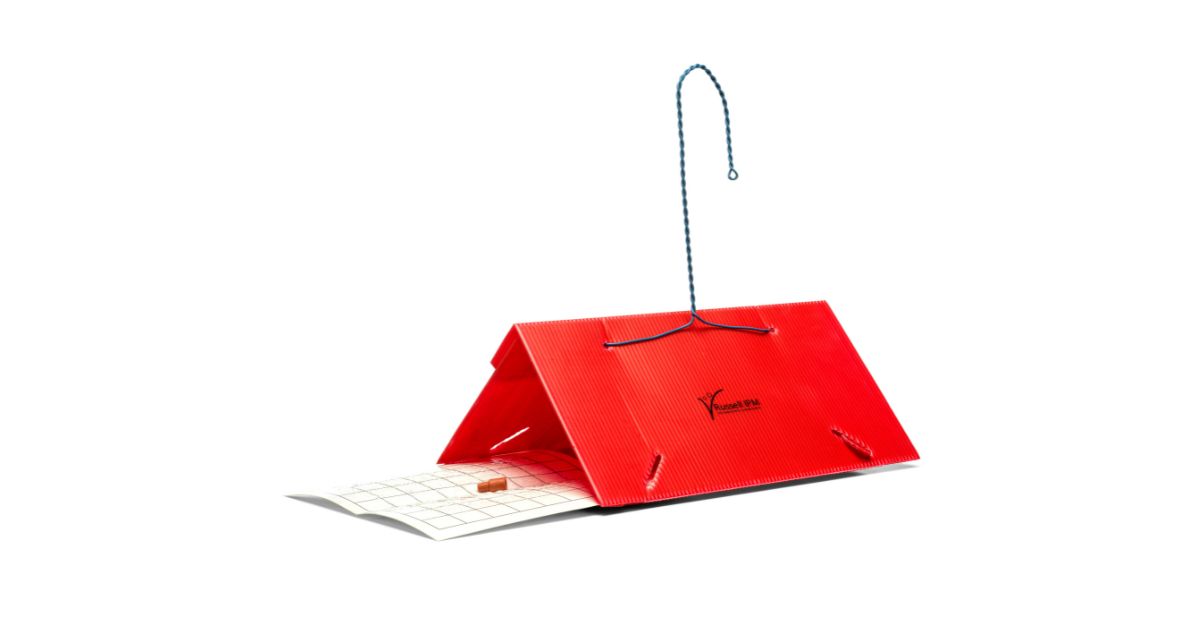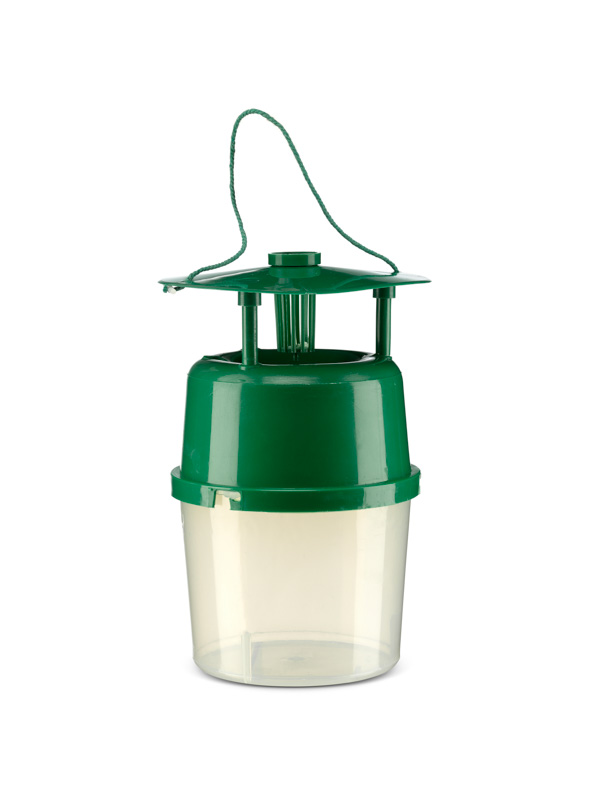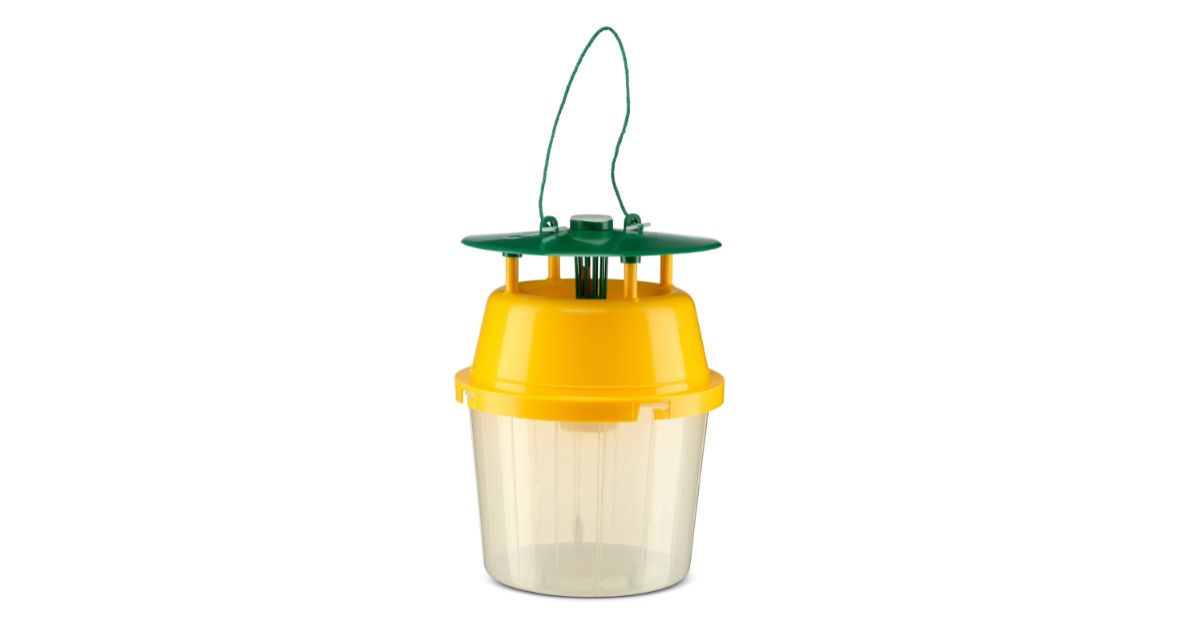Biology
Adult moths have a wingspan of 16 to 19 mm. There are very obvious and characteristic brown oval markings on the wing, surrounded by two golden brown lines, tending towards the bronze, on the grey fore wings. Hind wings are a reddish brown and are delicately ciliated.
Adult females lay between 30 and 70 eggs. These are flat and oval in shape, and translucent to white in colour. Just before hatching the dark head of the larvae is visible. Eggs will hatch after 6-10 days.
Larvae are 1-2cm long and pink with a brown head in colour. They develop through 3-5 instars over a period of approximately 5 weeks.
The pupal stage lasts 7-30 days depending on environmental conditions such as temperature. Pupae are brown and around 1.5cm in length. Pupation occurs in protected sites.
Nature of Damage
- Damage is caused by the larvae tunnelling into the fruit to feed on the seeds.
- Brown frass collects outside the entry hole of the tunnelling larvae.
- Early fruit which is attacked by this pest will drop prematurely.
Monitoring
Pheromone for Codling Moth, Cydia pomonella
Russell IPM manufacture and supply pheromone lures, traps and complete monitoring systems for Codling moth, Cydia pomonella. Regular monitoring through use of pheromone traps gives early warning of the infestation and also exhibits the density of the insect population to inform successful IPM strategies.


